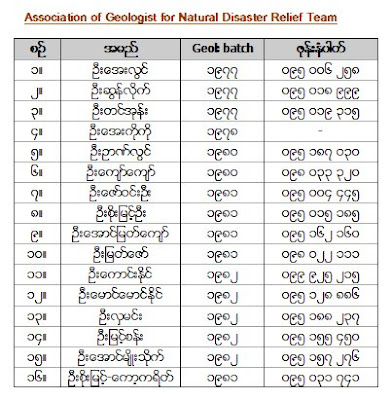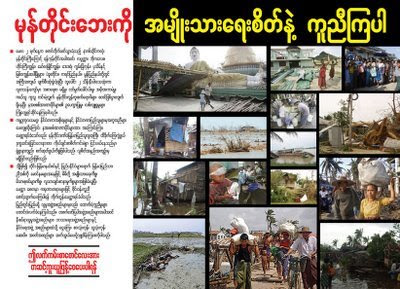Tonight we all discussed and decided to help devastated people of Myanmar, we formed an Association of Geologists for Natural Disaster Relief. We are just starting action for helping people of Nargis cyclone devastation.
Thank you for all our Myanmar Geologists!!!!!
Association of Geologist for Natural Disaster Relief Team
အသင္းဖြဲ႔စည္းဖြဲ႔စည္းထားမႈမွာ ေအာက္ပါအတိုင္းျဖစ္ပါသည္။










